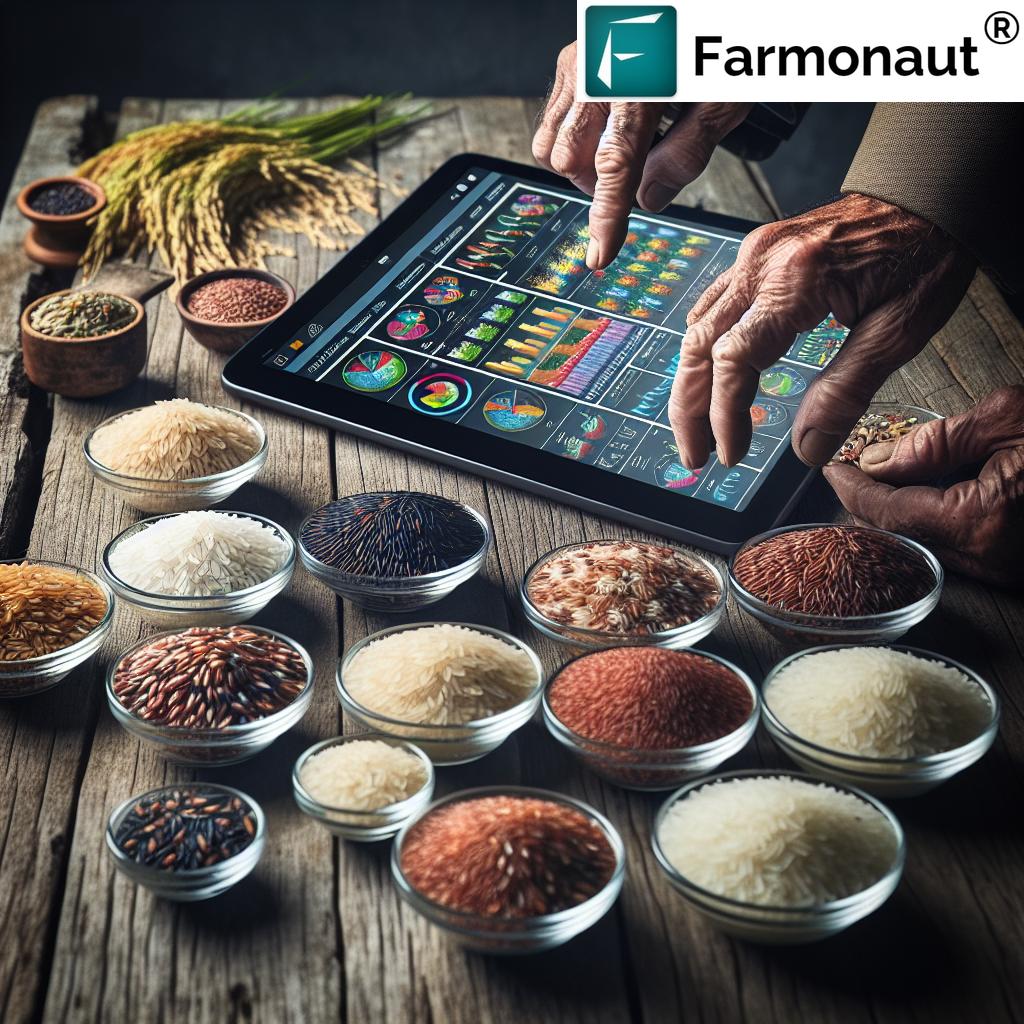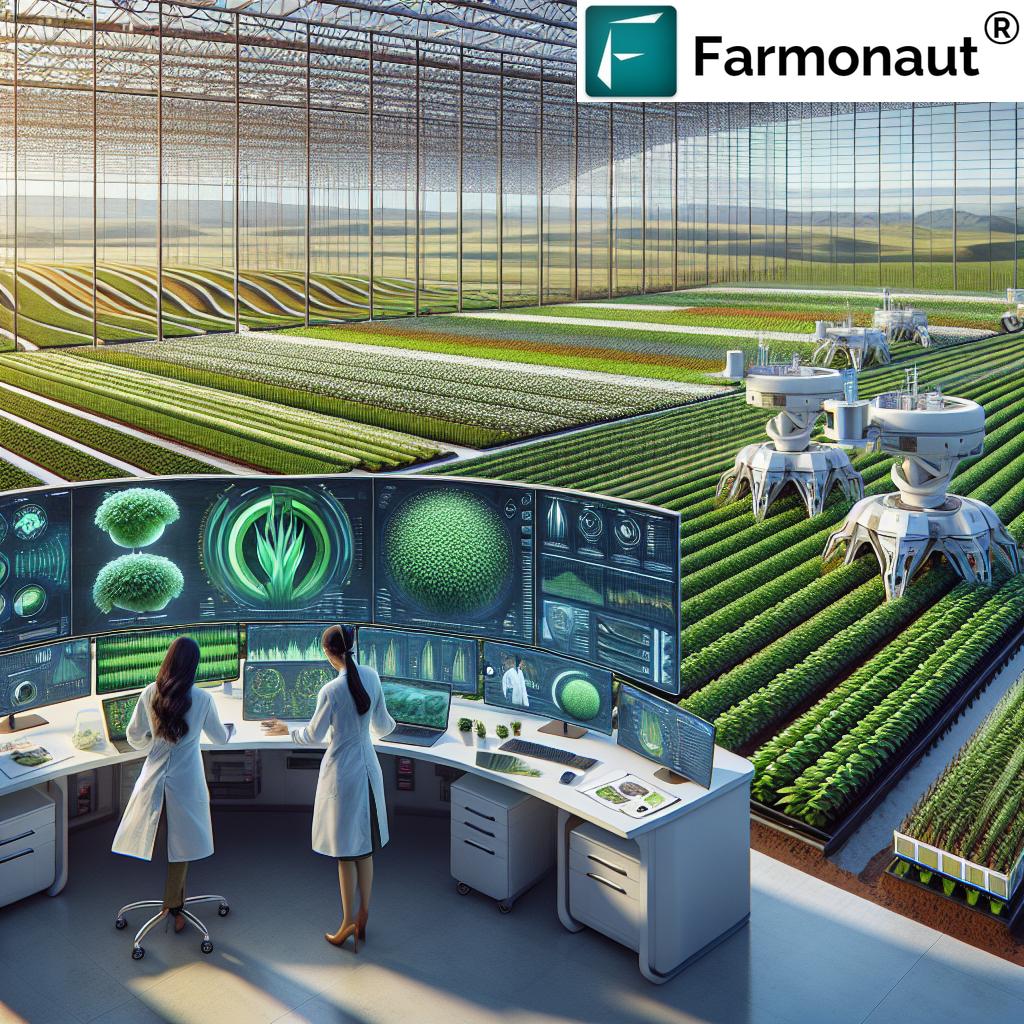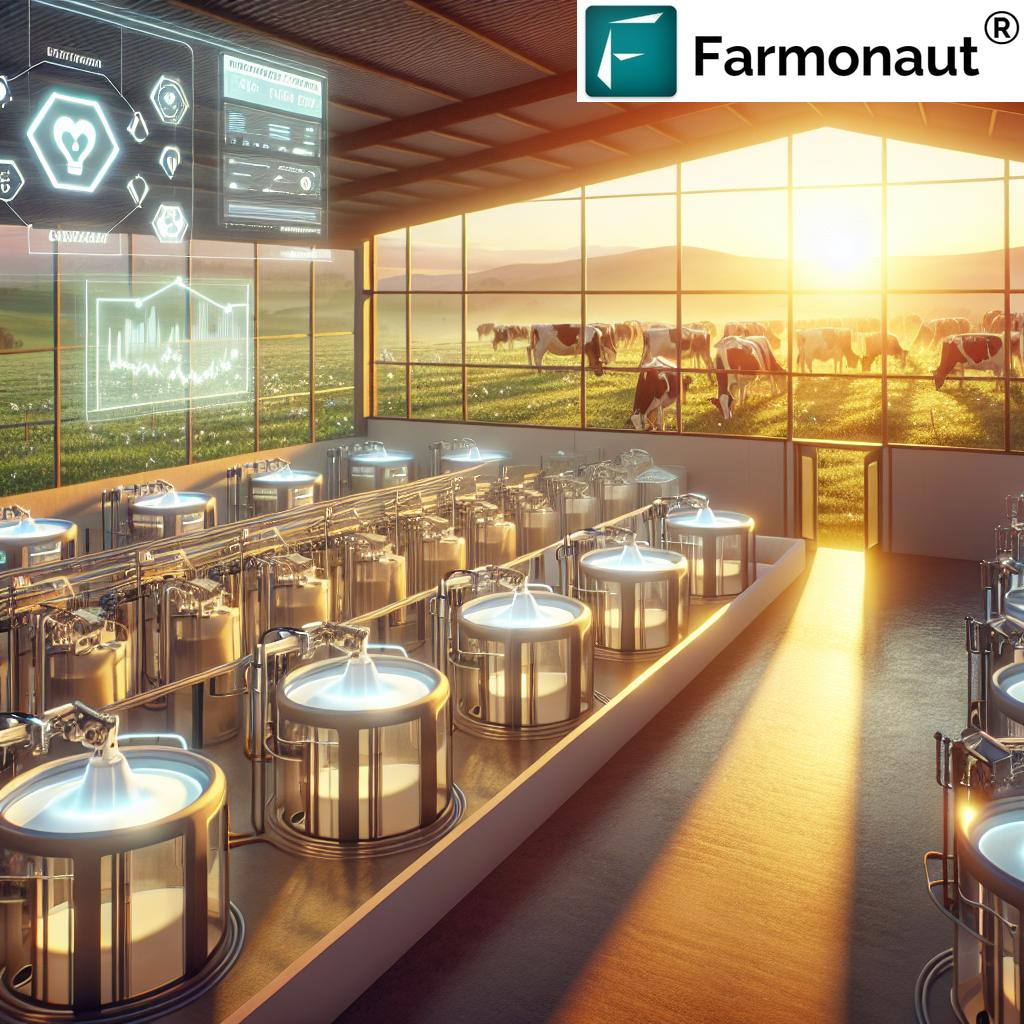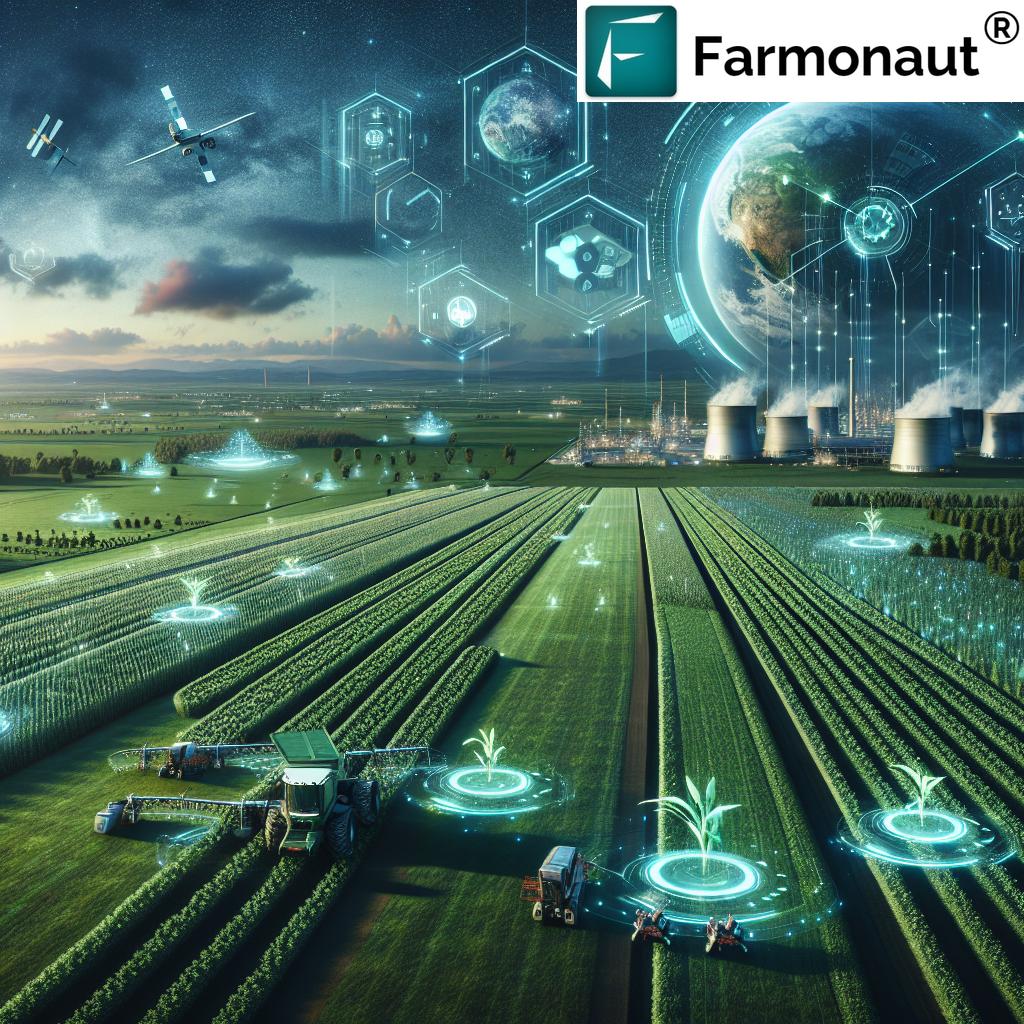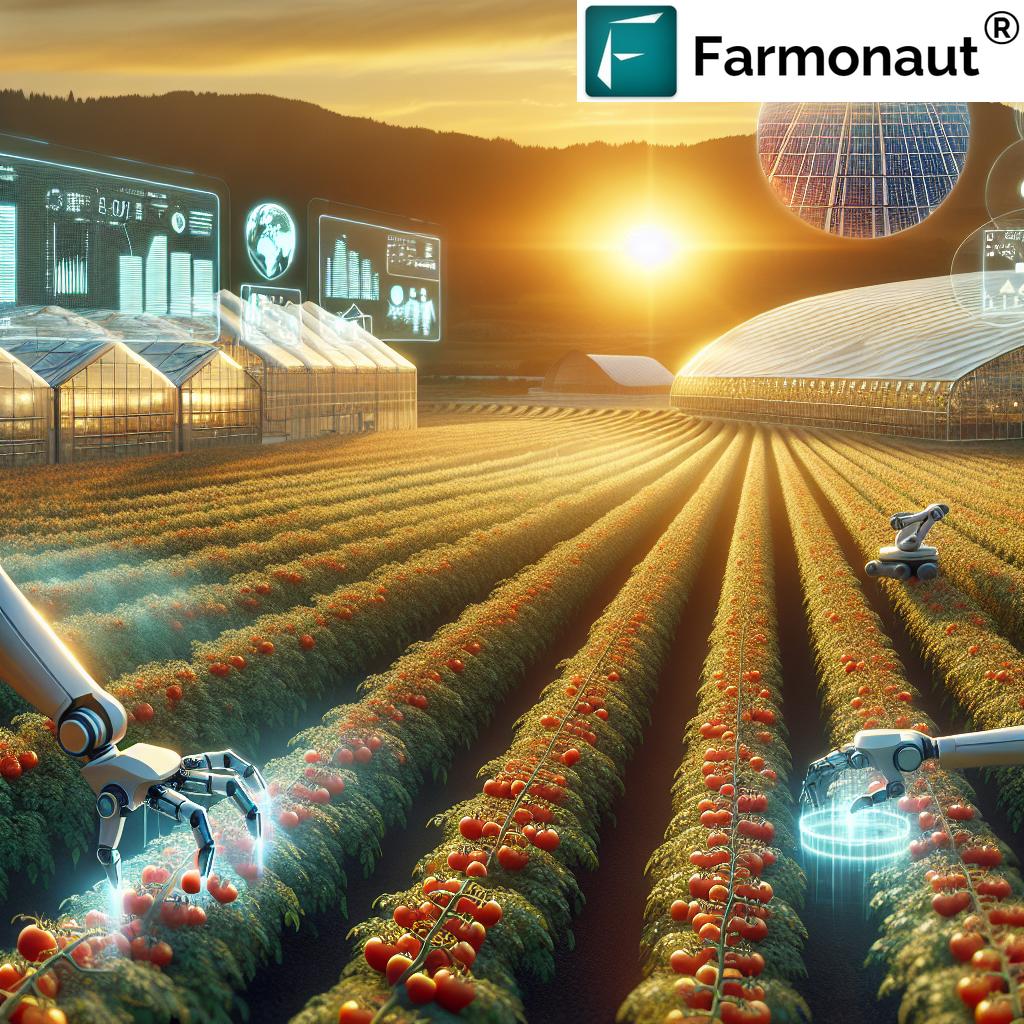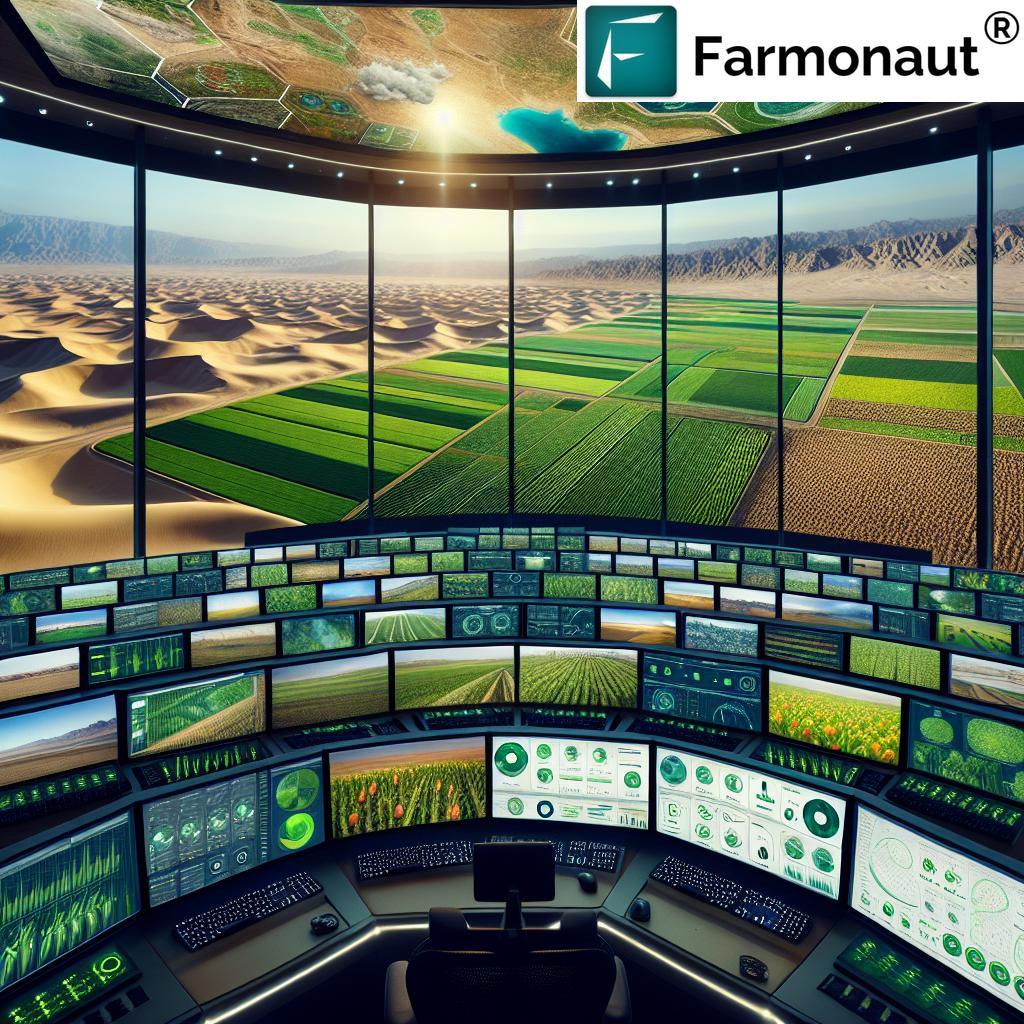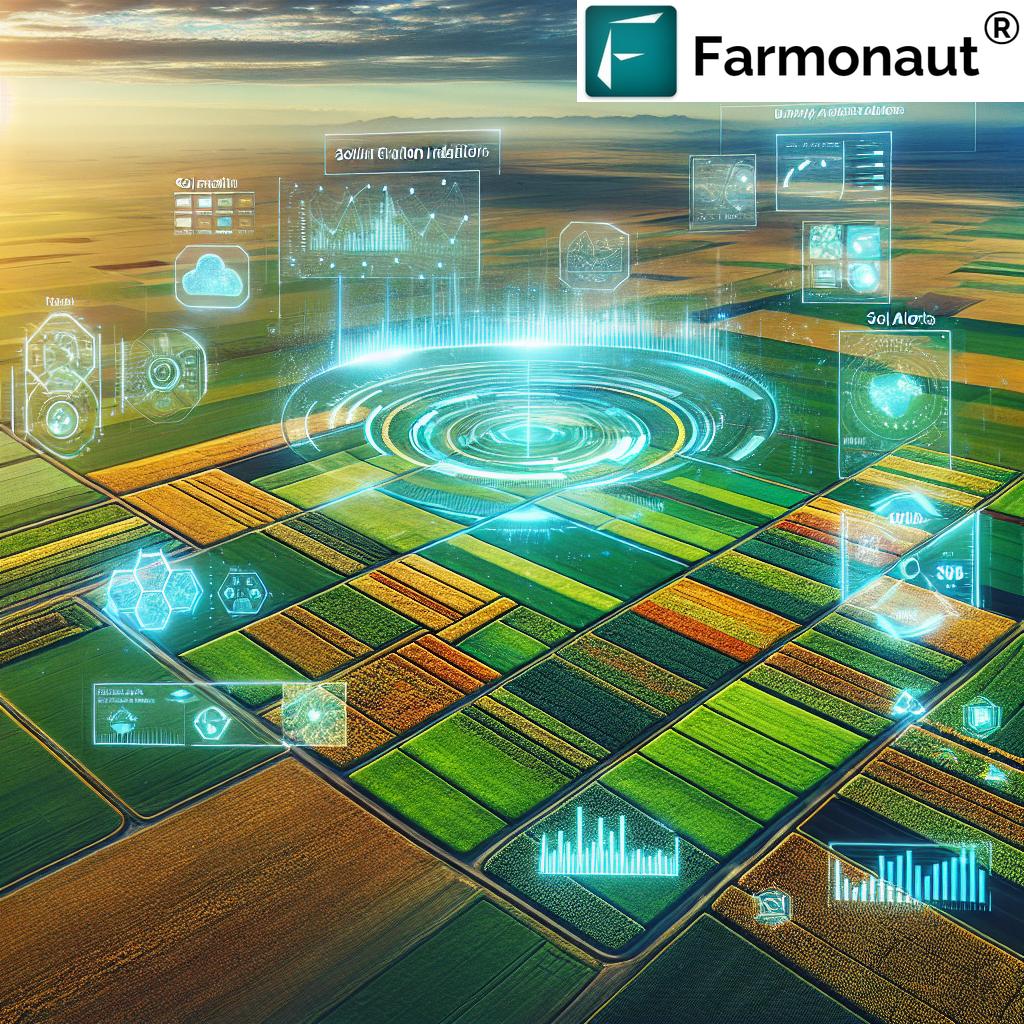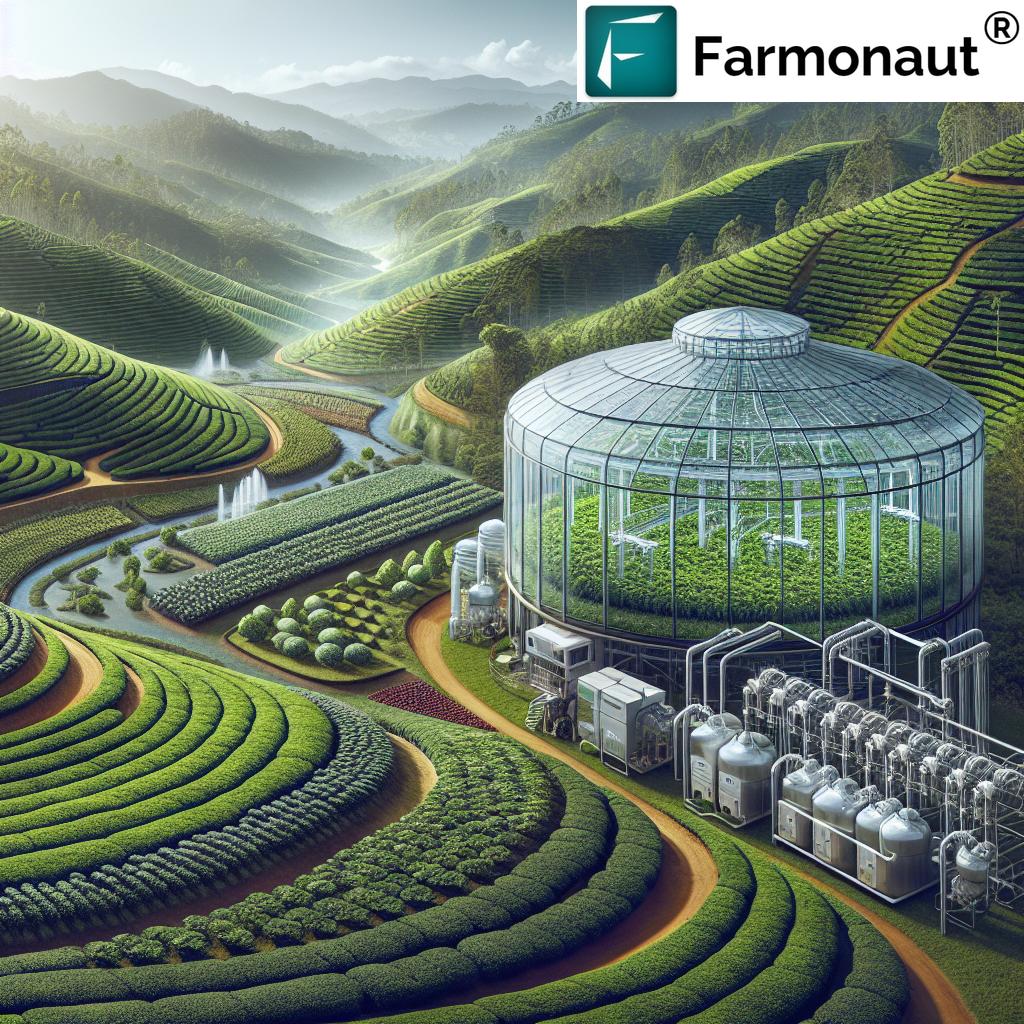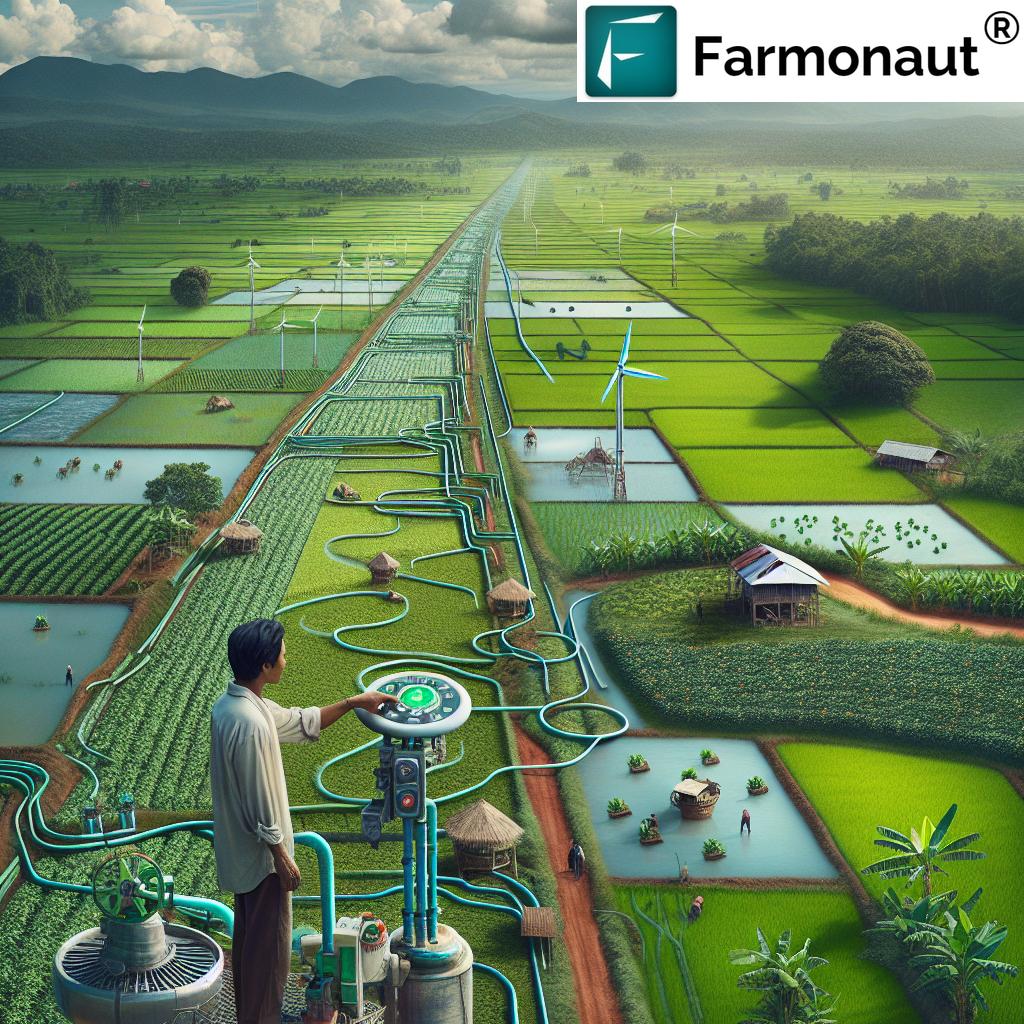Revolutionizing Food Service: Japan’s $7.8M Investment in AI-Powered Culinary Robots
“Japan invests $7.8M in AI-powered culinary robots, revolutionizing the food service industry.”
In the ever-evolving landscape of food service, we are witnessing a remarkable transformation driven by cutting-edge technology and innovation. As pioneers in agricultural technology, we at Farmonaut are keenly observing the fascinating developments in food robotics investment and automated culinary technologies that are reshaping the industry on a global scale. Today, we’ll delve into the exciting world of AI-powered culinary robots, with a special focus on Japan’s recent $7.8 million investment in this groundbreaking technology.
The Rise of Food Robotics: A Global Perspective
The food service industry is undergoing a significant transformation, with robotics and artificial intelligence at the forefront of this revolution. From smart vending machines to fully automated restaurants, the integration of technology in food preparation and service is creating new opportunities and addressing long-standing challenges.
- Labor shortages in the food service sector
- Increasing demand for efficiency and consistency
- Growing interest in contactless food preparation and delivery
- The need for innovative solutions in a competitive market
These factors have led to a surge in food robotics investment across the globe, with Japan taking a leading role in this technological advancement.
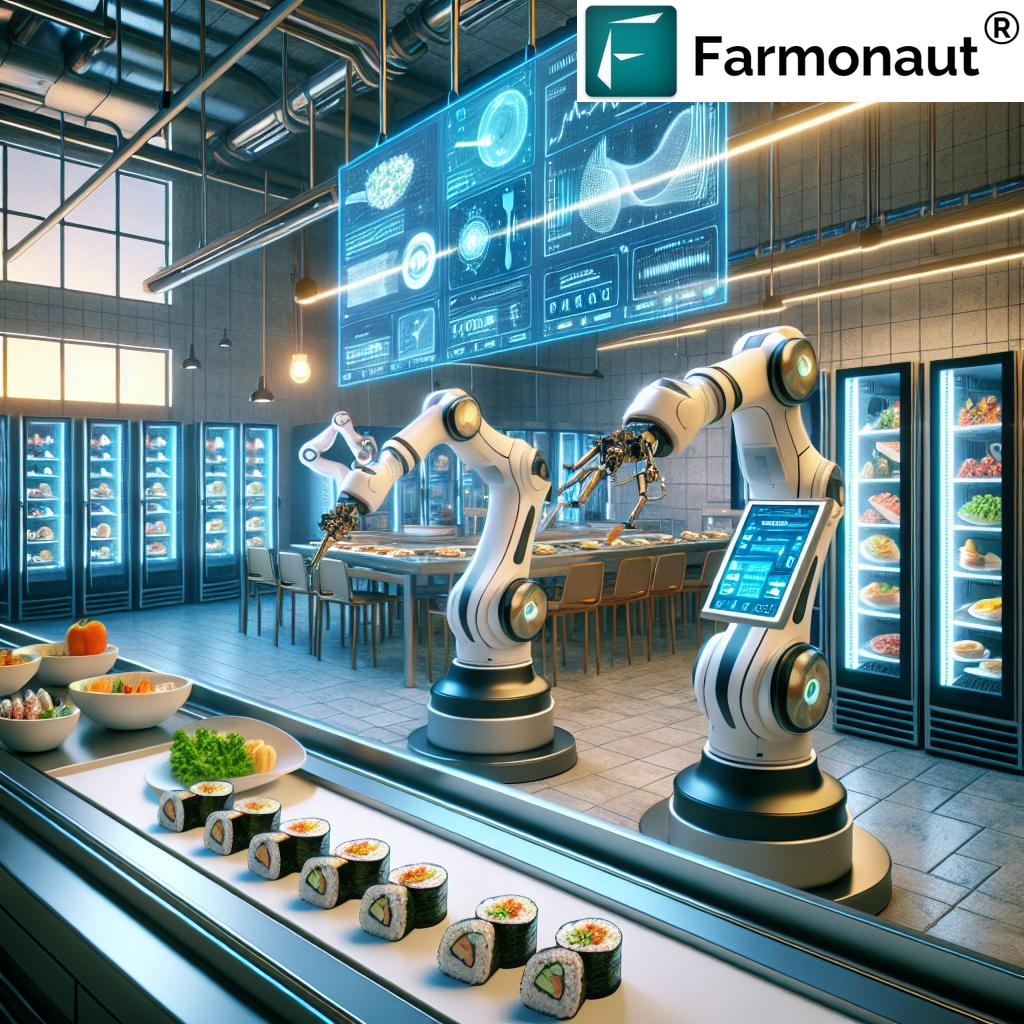
Japan’s $7.8M Investment: A Game-Changer in Culinary Robotics
Japan has long been at the forefront of robotics and automation, and their recent $7.8 million investment in AI-powered culinary robots is set to revolutionize the food service industry. This significant funding is aimed at developing and implementing advanced robotic systems that can perform a wide range of culinary tasks with precision and efficiency.
Key aspects of Japan’s investment include:
- Research and Development: A substantial portion of the investment is allocated to R&D, focusing on enhancing AI algorithms and machine learning capabilities for food preparation.
- Prototype Development: Creating and testing new robotic systems designed specifically for various culinary applications.
- Integration with Existing Technologies: Ensuring compatibility with current kitchen equipment and food service operations.
- Training and Implementation: Developing programs to train food service professionals in operating and maintaining these advanced systems.
This investment is not just about replacing human workers; it’s about augmenting human capabilities and creating new opportunities in the food service sector.
AI and Deep Learning in Food Automation
At the heart of these culinary robots lies sophisticated AI and deep learning algorithms. These technologies enable the robots to perform complex tasks with a level of precision and consistency that rivals human chefs.
- Pattern Recognition: AI systems can quickly identify ingredients, assess their quality, and determine the best preparation methods.
- Adaptive Learning: Through machine learning, these robots can improve their performance over time, adapting to new recipes and techniques.
- Predictive Analytics: AI can analyze trends and customer preferences to optimize menu planning and ingredient ordering.
As experts in agricultural technology, we at Farmonaut understand the importance of AI in modern farming practices. Our satellite-based farm management solutions leverage similar technologies to provide real-time crop health monitoring and AI-based advisory systems. To learn more about our innovative approach to agriculture, visit our web app or download our mobile apps:
Collaborative Robotics in Restaurants
One of the most exciting developments in food service robotics is the concept of collaborative robots, or “cobots.” These machines are designed to work alongside human staff, enhancing efficiency and productivity in restaurant kitchens.
Benefits of collaborative robotics include:
- Increased consistency in food preparation
- Reduced physical strain on human workers
- Improved food safety through precise temperature control and handling
- Enhanced productivity, allowing human staff to focus on creative and customer-facing tasks
For instance, in Japan, we’re seeing the development of robotic assistants that can handle repetitive tasks like chopping vegetables or stirring pots, while human chefs focus on more complex culinary creations.
Smart Vending Machines: The Future of Convenient Dining
Another area where AI and robotics are making significant strides is in the realm of smart vending machines. These advanced machines are a far cry from the simple snack dispensers of the past. Today’s smart vending machines are capable of preparing and serving hot meals, custom beverages, and even gourmet dishes.
Features of modern smart vending machines:
- Touch screen interfaces for customized ordering
- AI-powered inventory management and restocking
- Remote monitoring and maintenance capabilities
- Integration with mobile payment systems
- Real-time data analytics for consumer behavior insights
In Japan, we’re seeing a proliferation of these high-tech vending machines, offering everything from freshly prepared ramen to artisanal coffee drinks. This trend is rapidly spreading to other parts of Asia, Europe, and the United States, revolutionizing the concept of quick-service dining.
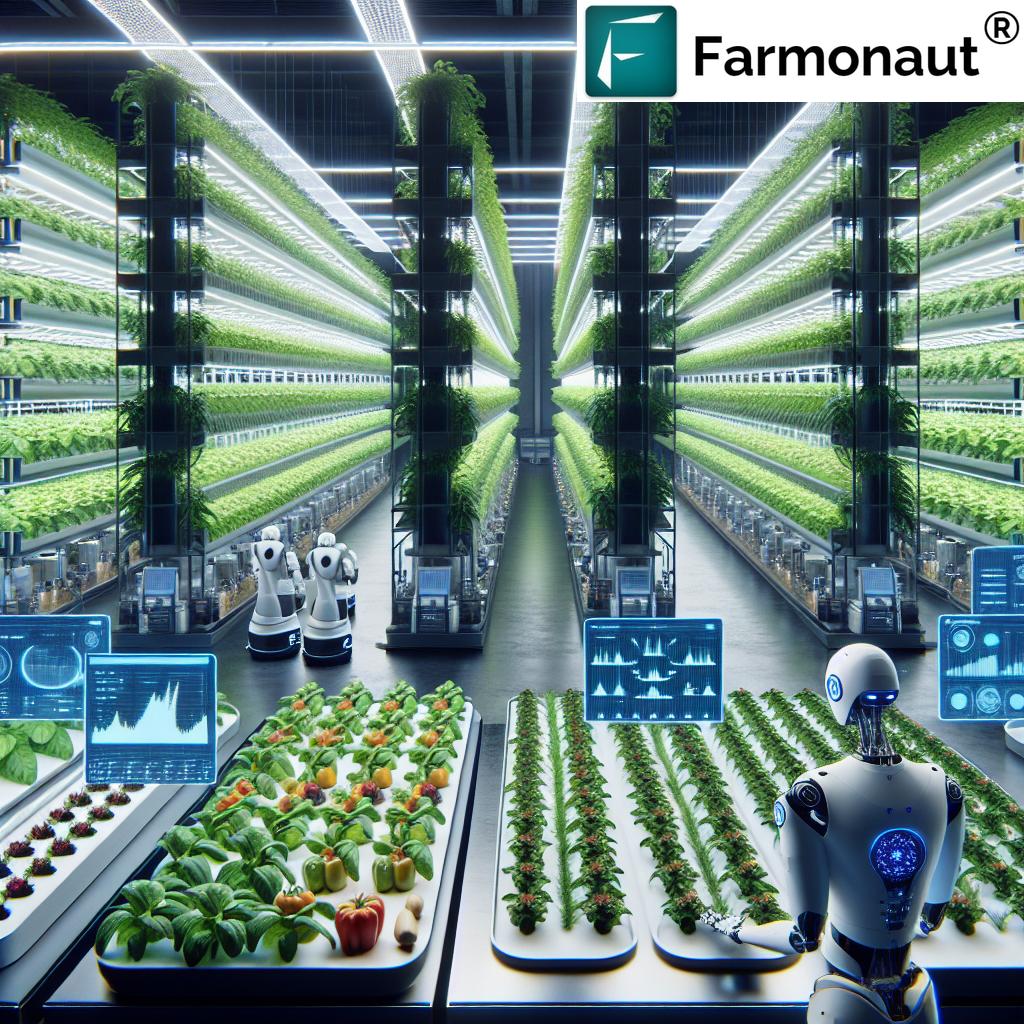
Precision Agriculture and Its Impact on Food Service
While we’re focusing on robotics in food service, it’s important to note the connection between advanced agricultural practices and the food industry. At Farmonaut, we specialize in precision agriculture, using satellite technology and AI to optimize crop yields and resource management.
Our technologies contribute to the food service industry by:
- Ensuring a steady supply of high-quality ingredients
- Reducing waste through precise crop management
- Providing traceability for food products from farm to table
- Supporting sustainable farming practices that align with consumer preferences
To learn more about how our precision agriculture solutions can benefit your agribusiness, check out our API and API Developer Docs.
Robo-Chefs and Robotically-Operated Factories
The concept of fully automated kitchens and food production facilities is no longer science fiction. Japan’s investment in culinary robots is paving the way for sophisticated robo-chefs capable of preparing complex dishes with precision and consistency.
Key developments in this area include:
- Multi-Armed Robotic Systems: Capable of handling multiple cooking tasks simultaneously
- Advanced Sensory Technologies: Enabling robots to assess food quality, texture, and doneness
- Recipe Replication: AI systems that can accurately reproduce dishes based on input from master chefs
- Scalable Production: Robotic systems designed to scale up food production for large-scale operations
These technologies are not just limited to restaurants; they’re also being implemented in food manufacturing facilities, enabling more efficient and hygienic production of packaged foods and ready-to-eat meals.
Global Trends in Food Tech Investment
“Foodtech startups across Asia, Europe, and US are attracting significant investment for automated culinary technologies.”
While Japan’s $7.8 million investment is significant, it’s part of a broader global trend in food tech funding. Startups and established companies alike are attracting substantial investments to develop innovative solutions for the food service industry.
- Asia: Beyond Japan, countries like China and Singapore are investing heavily in food robotics and AI-driven culinary solutions.
- Europe: Countries such as Germany and the UK are focusing on developing sustainable and efficient food production technologies.
- United States: Silicon Valley startups are leading the charge in creating AI-powered kitchen assistants and food delivery robots.
- Middle East: Countries in this region are investing in food tech to enhance food security and reduce reliance on imports.
- Africa: There’s growing interest in agtech solutions that can improve food production and distribution across the continent.
This global investment trend is creating a rich ecosystem of innovation in the food service sector, with technologies ranging from AI-powered inventory management systems to blockchain-based food traceability solutions.
Addressing Challenges in Food Management and Retail
The integration of AI and robotics in food service is not just about food preparation; it’s also revolutionizing food management and retail operations. These technologies are addressing key challenges in the industry, including:
- Inventory Management: AI systems can predict demand, optimize stock levels, and reduce food waste.
- Quality Control: Robotic systems with advanced sensors can ensure consistent food quality and safety.
- Customer Service: AI-powered chatbots and virtual assistants are enhancing customer interactions in restaurants and food retail environments.
- Personalization: Machine learning algorithms can analyze customer preferences to offer personalized menu recommendations and promotions.
At Farmonaut, we understand the importance of data-driven decision-making in agriculture, which directly impacts the food service supply chain. Our satellite-based monitoring and AI advisory systems provide valuable insights that can help optimize food production from farm to table.
The Future of Food Service Technology
As we look to the future, the possibilities for AI and robotics in food service seem limitless. Some exciting prospects include:
- 3D Food Printing: Advanced robots capable of creating intricate food designs and textures.
- Nano-Cooking: Precision cooking at the molecular level for enhanced flavors and nutritional benefits.
- AI-Powered Menu Creation: Systems that can develop new recipes based on trending ingredients and flavors.
- Virtual Reality Dining Experiences: Combining robotic food preparation with immersive dining environments.
These advancements promise to create new culinary experiences while addressing challenges such as labor shortages and the need for increased efficiency in food service operations.
Automation: Creating Opportunities, Not Replacing Jobs
A common concern with the rise of automation in any industry is the potential loss of jobs. However, in the food service sector, we’re seeing that robotics and AI are creating new opportunities rather than simply replacing human workers.
New roles emerging in the automated food service industry include:
- Robotic Systems Operators and Maintenance Technicians
- AI and Machine Learning Specialists for Food Service Applications
- Data Analysts for Menu Optimization and Customer Insights
- Food Technology Innovators and Researchers
- Culinary Experience Designers combining technology with gastronomy
These new positions require a blend of culinary knowledge and technical skills, opening up exciting career paths in the evolving food service landscape.
Comparative Analysis of AI-Powered Culinary Robots
To provide a clearer picture of the current state of AI-powered culinary robots, let’s take a look at some of the leading technologies in this field:
| Robot Name/Model | Manufacturer | Primary Function | Key Features | AI/Deep Learning Capabilities | Estimated Cost Range | Target Market | Potential Impact on Labor | Current Adoption Level |
|---|---|---|---|---|---|---|---|---|
| SushiBot | Suzumo | Sushi preparation | High-speed rice moulding, ingredient placement | Pattern recognition for ingredient placement | $50,000 – $100,000 | Sushi restaurants, food courts | Medium – reduces need for skilled sushi chefs | Medium |
| Flippy | Miso Robotics | Burger flipping, frying | Adaptable arm, temperature sensors | Real-time object recognition, cooking process optimization | $30,000 – $50,000 | Fast food chains | High – automates key fast food preparation tasks | Medium-High |
| BaristaBot | Rozum Robotics | Coffee preparation | Precise pouring, milk frothing | Customer preference learning, drink customization | $20,000 – $40,000 | Cafes, hotels | Medium – complements human baristas | Low-Medium |
| Moley Robotic Kitchen | Moley Robotics | Full meal preparation | Two robotic arms, full kitchen setup | Recipe replication, adaptive cooking techniques | $250,000+ | High-end restaurants, luxury homes | High – potential to replace multiple kitchen staff | Low (emerging technology) |
| Sally the Salad Robot | Chowbotics | Custom salad assembly | Ingredient dispensing, portion control | Nutritional analysis, inventory management | $30,000 – $60,000 | Corporate cafeterias, universities | Low-Medium – focuses on customization and hygiene | Medium |
| Pizzaiola | Picnic | Pizza assembly and cooking | Modular design, high-volume production | Order processing, production line optimization | $70,000 – $100,000 | Pizza chains, stadiums | High – streamlines pizza production process | Low-Medium (rapidly growing) |
This comparison illustrates the diverse range of AI-powered culinary robots currently available or in development. Each system offers unique capabilities and targets different segments of the food service industry, showcasing the breadth of innovation in this field.
The Role of Data in Food Service Innovation
At the heart of these technological advancements in food service is data. The ability to collect, analyze, and act on vast amounts of information is transforming every aspect of the industry. At Farmonaut, we understand the power of data in agriculture, and we see similar principles applying to food service.
Key areas where data is driving innovation include:
- Predictive Analytics: Forecasting demand, optimizing inventory, and reducing waste
- Customer Insights: Understanding preferences and trends to inform menu development
- Supply Chain Optimization: Ensuring efficient sourcing and distribution of ingredients
- Quality Control: Using data to maintain consistent food quality and safety standards
By leveraging data effectively, food service businesses can make more informed decisions, improve operational efficiency, and enhance customer satisfaction.
The Intersection of Agtech and Food Service
As experts in agricultural technology, we at Farmonaut see a strong connection between advancements in farming and innovations in food service. The technologies we develop for precision agriculture have far-reaching implications for the entire food supply chain.
For example:
- Our satellite-based crop monitoring can help restaurants and food manufacturers ensure a steady supply of high-quality ingredients.
- Our AI-powered advisory systems can provide insights that help optimize crop yields, directly impacting food availability and pricing.
- Our blockchain-based traceability solutions can enhance food safety and transparency from farm to table.
To learn more about how our agtech solutions can benefit the food service industry, explore our web app.
Sustainable Food Service: The Role of Technology
Sustainability is becoming increasingly important in the food service industry, and technology is playing a crucial role in achieving environmental goals. AI-powered culinary robots and smart systems are contributing to sustainability efforts in several ways:
- Reduced Food Waste: Precise portioning and inventory management
- Energy Efficiency: Optimized cooking processes and equipment usage
- Water Conservation: Smart dishwashing systems and water recycling
- Sustainable Sourcing: AI-driven supplier selection based on environmental criteria
These technological solutions align with growing consumer demand for environmentally responsible dining options.
The Human Element in an Automated Food Service World
While we’ve focused heavily on the technological aspects of the food service revolution, it’s important to remember the irreplaceable human element. Even in a highly automated environment, human creativity, empathy, and decision-making remain crucial.
Areas where human skills continue to be essential include:
- Menu design and culinary innovation
- Customer service and hospitality
- Quality assurance and taste testing
- Strategic planning and business management
The future of food service lies in finding the right balance between technological efficiency and human touch.
Conclusion: Embracing the Culinary Tech Revolution
As we’ve explored throughout this blog post, the food service industry is on the cusp of a technological revolution. Japan’s $7.8 million investment in AI-powered culinary robots is just one example of the global push towards automation and innovation in this sector.
From smart vending machines to fully automated kitchens, these advancements promise to enhance efficiency, consistency, and creativity in food preparation and service. However, it’s crucial to approach this revolution with a balanced perspective, recognizing both the potential benefits and the importance of preserving the human elements that make dining a uniquely social and cultural experience.
At Farmonaut, we’re excited to be part of this broader technological ecosystem, contributing to the future of food through our advanced agricultural solutions. As the lines between agtech and food service continue to blur, we look forward to seeing how innovations in both fields will shape the way we grow, prepare, and enjoy food in the years to come.
To stay updated on the latest developments in agtech and its impact on the food industry, be sure to follow our blog and explore our comprehensive suite of agricultural technology solutions.
FAQ Section
Q: How are AI-powered culinary robots changing the food service industry?
A: AI-powered culinary robots are revolutionizing food service by enhancing efficiency, consistency, and hygiene in food preparation. They’re addressing labor shortages, reducing human error, and enabling 24/7 operations in many food service settings.
Q: Will robotic chefs completely replace human chefs?
A: While robotic chefs are becoming more advanced, they’re unlikely to completely replace human chefs. Instead, they’re expected to work alongside humans, handling repetitive tasks and allowing human chefs to focus on creativity and complex culinary techniques.
Q: How does Japan’s investment in culinary robots compare to other countries?
A: Japan’s $7.8 million investment is significant and reflects the country’s leadership in robotics. However, other countries, particularly in Asia, Europe, and North America, are also investing heavily in food service automation technologies.
Q: What impact will food service automation have on employment in the industry?
A: While automation may reduce the need for certain roles, it’s also creating new job opportunities in areas such as robotic system operation, maintenance, and food technology innovation. The industry is likely to see a shift in skill requirements rather than an overall reduction in employment.
Q: How does precision agriculture, like Farmonaut’s technology, contribute to food service innovation?
A: Precision agriculture technologies, such as Farmonaut’s satellite-based monitoring systems, contribute to food service innovation by ensuring a consistent supply of high-quality ingredients, enabling traceability, and supporting sustainable farming practices that align with consumer preferences in the food service industry.




